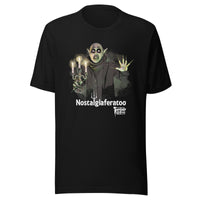Rankin/Bass got into the Halloween spirit with its overlooked 'Mad Monster Party' in 1967
Boris Karloff and 'MAD' magazine creators made this animated gem a true island of misfit toys.

Rudolph did more than save Christmas. On December 6, 1964, the beloved holiday special Rudolph the Red-Nosed Reindeer first aired as a special on NBC. Around half of all American households tuned in for the stop-motion animation extravaganza. It became an immediate classic, and it has aired on network television consistently for the last half century.
The success was a boost to the company behind the special, the upstart Rankin/Bass Productions. Arthur Rankin, Jr., and Jules Bass founded their animation studio at the start of the Sixties. Rankin/Bass, then known as Videocraft, had previously put out The New Adventures of Pinocchio, the company's first foray into stop-motion — or, as they called it, "Animagic." The traditional cartoon series Tales of the Wizard of Oz followed in 1961. But the popularity of Rudolph turned Rankin/Bass into a distinctive dream factory.
Suddenly, every network wanted a special from Rankin/Bass, for every holiday. Rudolph also led to some feature films from the studio. In 1965, Rankin/Bass released the time-travel tale Willy McBean and his Magic Machine, a sort of precursor to Bill & Ted's Excellent Adventure. In 1967, Rankin/Bass did the ultimate monster mash-up with Mad Monster Party.
Though it was originally released in spring and contained no overt mention of Halloween, Mad Monster Party featured every creepy creature associated with trick or treating. Count Dracula, the Mummy, the Hunchback of Notre Dame, the Werewolf, the Invisible Man, Dr. Jekyll and Mr. Hyde, the Creature from the Black Lagoon, skeletons and zombies populated the stop-motion family comedy. Due to its feature length, Mad Monster Party is hardly replayed as much as Rankin/Bass television specials, and remains overshadowed by the likes of Hermey and Yukon Cornelius. But there is a fascinating story behind its creation.
Mad Monster Party nabbed a true legend for its lead role. Boris Karloff, nearly 80 years old, best known for playing Frankenstein's monster in classic Universal horror pictures, this time played the monster's creator. He voiced Baron Boris von Frankenstein. Karloff died a couple years after the film's release, making Mad Monster Party his final association with the character. Meanwhile, flamboyant comedian Phyllis Diller brought to life the Monster's Mate, a puppet that was essentially a tiny little Phyllis Diller.
 A 1968 cover of 'TV Guide' illustrated by Jack Davis
A 1968 cover of 'TV Guide' illustrated by Jack DavisThe characters were designed by illustrator Jack Davis, one of the original artists for MAD magazine. Davis had a distinct style to his art, as his caricatures typically featured enlarged heads and feet separated by long, skinny legs. This carried over to the Rankin/Bass miniatures, which were produced at a cost of about $5,000 each. The script was co-written by another MAD legend, magazine creator Harvey Kurtzman. Truly, the Mad in Mad Monster Party might have been a reference to the popular comic publication.
The finished designs had an impact on how we continue to imagine this characters today. Notably, the Count on Sesame Street was heavily inspired by the Dracula of Mad Monster Party, who also sported a monocle alongside his triangular nose.
Like all the early Rankin/Bass productions, Mad Monster Party was crafted in Japan, at MOM Studios. Rankin himself lived in Japan for several years, overseeing productions and lending a hand with details like costuming the wee puppets with miniature dresses.
Outside of the celebrity stars, most of the voices were provided by Allen Swift, an ace impersonator who had previously worked on Howdy Doody. Voicing more than a dozen characters in the film, Swift parodied iconic Hollywood stars such as Peter Lorre and Jimmy Stewart with his Mad Monster Party voices. For all his work, he was erroneously miscredited onscreen as "Alan Swift."
In 1967, zombies were hardly a common fright in films. Remember, Night of the Living Dead did not hit theaters until the following year. But Mad Monster Party populated its creepy castle with a score of emaciated zombie butlers. Elsewhere in the movie, a group of skeletons called Little Tibia and the Fibias plays spoofs of popular rock songs.
Oddly, the real musicians behind Little Tibia and the Fibias remain a mystery. A DVD reissue of the film credits the funk band Dyke & the Blazers, though the two hardly sound alike. Rankin/Bass historian Rick Goldschmidt told WIRED magazine, "I read a DVD review that said it was Dyke & The Blazers, But I’m not positive that is true."
Fifty years later, Mad Monster Party maintains its cult status, having influenced everyone from Jim Henson to Tim Burton. It remains a true island of misfit toys just waiting to be rediscovered.








1 Comments





































